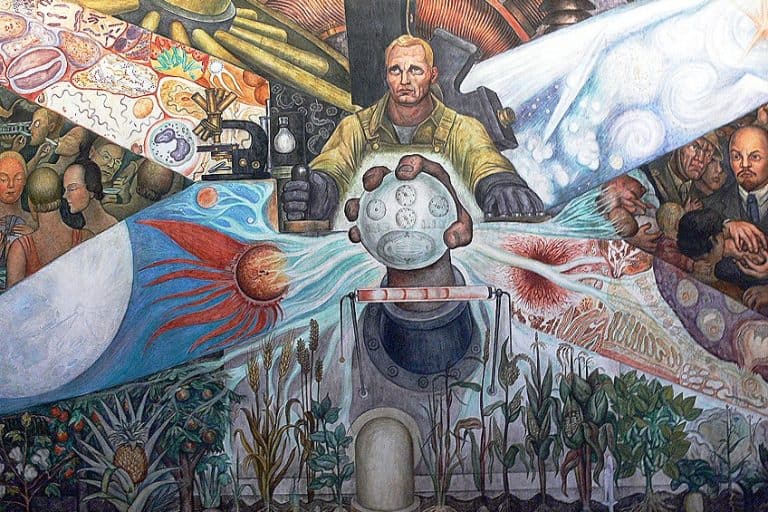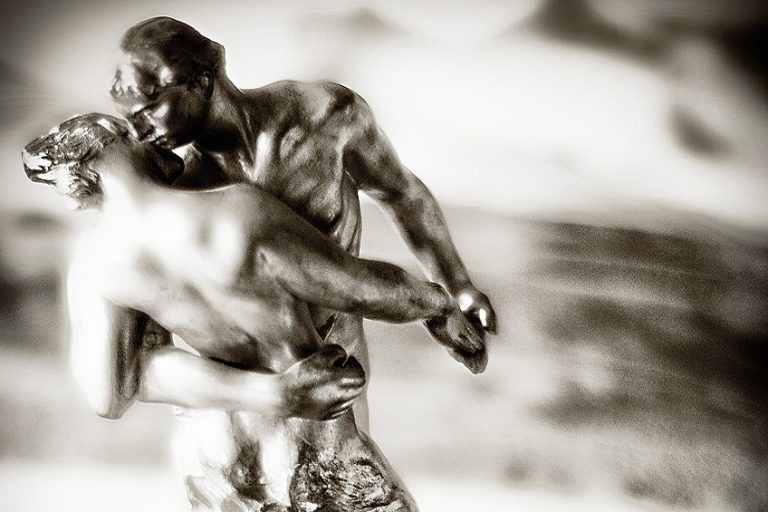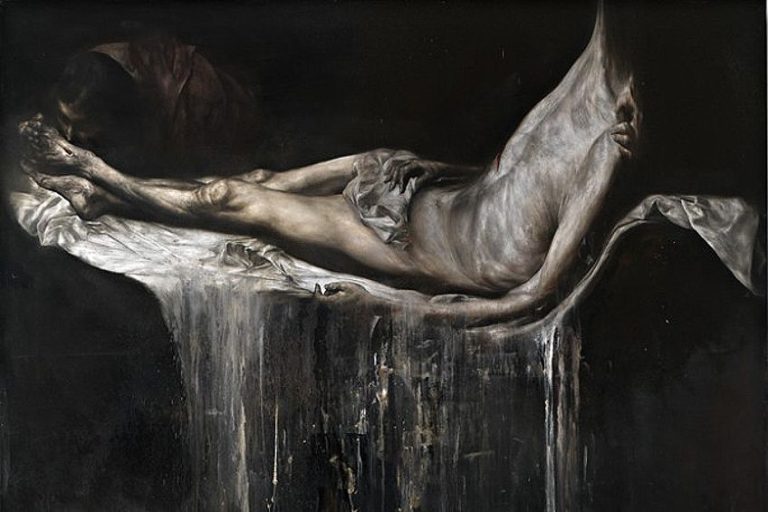Wayne Thiebaud – The Sweet Treats Pop Artist
Wayne Thiebaud, a celebrated pop artist, has carved a unique place for himself in the art world with his captivating paintings. His delightful and vibrant works have made a long-lasting impression on art lovers and experts alike. In this article, we delve into the fascinating world of Wayne Thiebaud’s paintings, exploring his artistic journey and his impact as a pop artist on the art scene. From his iconic depictions of cakes and pastries to his landscapes and everyday objects, Wayne Thiebaud’s biography reveals a remarkable artist whose imaginative brushstrokes have left an indelible mark on the art world.
Table of Contents
Wayne Thiebaud Biography: The Pop Artist
| Name | Wayne Thiebaud |
| Date of Birth | 15 November 1920 |
| Date of Death | 25 December 2021 |
| Nationality | American |
| Styles | Pop Art |
| Periods | Pop art, Modern art, Bay Area Figurative Movement, and Nouveau Réalisme |
Wayne Thiebaud, born on November 15, 1920, in Mesa, Arizona, is a prominent American artist whose name has become synonymous with vibrant and delectable paintings. Raised in Long Beach, California, Thiebaud had a love for creating at an early age. He pursued his artistic education at various institutions, including Long Beach Polytechnic High School and Sacramento State College, where he studied under artists such as Rudolph Schaeffer and David Park.
Early Artworks
Thiebaud’s early artworks demonstrated a keen interest in capturing the beauty of everyday objects and landscapes. His signature style, characterized by bold colors, thick brushstrokes, and an emphasis on light and shadow, began to emerge during this period.
His exploration of subjects such as cakes, pies, and ice cream cones quickly garnered attention, reflecting his fascination with American popular culture and consumerism.
Career Milestones
Throughout his career, Wayne Thiebaud achieved numerous significant milestones. In 1962, he gained widespread recognition as part of the influential New Painting of Common Objects exhibition at the Pasadena Art Museum. Thiebaud’s distinct approach to pop art, which focused on everyday objects and scenes, set him apart from his contemporaries. His innovative use of thick paint and his ability to capture texture and form with a unique visual intensity established him as a master of his craft.
Thiebaud’s career achievements also include prestigious awards and honors. He was elected to the American Academy of Arts and Letters in 1968 and received the National Medal of Arts in 1994, recognizing his significant contributions to the art world. Thiebaud’s works have been exhibited in renowned galleries and museums worldwide, including the Whitney Museum of American Art, the Metropolitan Museum of Art, and the San Francisco Museum of Modern Art.
The Pop Artist’s Legacy
Wayne Thiebaud’s influence on art history extends beyond his own artistic achievements. His unique blend of pop art aesthetics and painterly methods has left an ineradicable impression on the global art scene. Thiebaud’s ability to elevate everyday objects to the realm of fine art, his celebration of American culture, and his mastery of color and form have inspired generations of artists.
His contributions have enriched the dialogue on pop art, representation, and the intersection of art and everyday life.
Wayne Thiebaud in Context
Wayne Thiebaud’s paintings, created during the mid-20th century in the United States, hold a unique place within both the socio-political climate of the time and the art scene of the era. The period in which Thiebaud emerged as an artist was marked by significant social and political changes, as well as a shifting artistic landscape.
Post-World War II
In the post-World War II era, the United States went through a period of market growth and consumerism. This was reflected in Thiebaud’s artworks, which often depicted subjects associated with American popular culture, such as cakes, pies, and ice cream cones.
Thiebaud’s vibrant and appetizing paintings captured the essence of a nation undergoing a consumer revolution, where abundance and indulgence became emblematic of the American Dream.
The Pop Art Movement
Thiebaud’s art emerged in the midst of the pop art movement, which celebrated the fusion of art and popular culture. Artists like Andy Warhol (1928-1987) and Roy Lichtenstein (1923-1997) were exploring similar themes, focusing on mass production, advertising, and consumer goods. Thiebaud’s unique contribution to this movement was his emphasis on the handmade and tactile nature of paint, creating a bridge between traditional painting techniques and pop art aesthetics.
In the art scene of the time, Thiebaud’s paintings stood out for their meticulous craftsmanship and a distinctive blend of realism and abstraction. While abstract expressionism dominated the art world, Thiebaud’s representational approach challenged prevailing artistic trends. His use of thick, impasto brushstrokes and his attention to light and shadow added a tactile quality to his works, elevating the everyday objects he portrayed to the realm of fine art.
The Reception of Wayne Thiebaud’s Paintings
Thiebaud’s artworks were met with both acclaim and controversy. Some critics celebrated his ability to capture the essence of American life and elevate the mundane, while others questioned the relevance of his subject matter. However, Thiebaud’s influence on subsequent generations of artists cannot be overstated.
His unique approach, blending pop art aesthetics with traditional painterly techniques, has had a lasting impact on the art world.
Furthermore, Thiebaud’s artworks can be seen as a reaction to the public and parliamentary state of the time. Amidst the Vietnam War, civil rights movements, and societal shifts, Thiebaud’s nostalgic and seemingly innocent depictions of American culture provided a momentary respite. They offered viewers a glimpse into a simpler, more idyllic past, providing a sense of comfort and familiarity in a changing world.
Wayne Thiebaud’s Paintings
One of the defining technical characteristics of Thiebaud’s artworks is his skillful handling of paint. He employs thick, luscious brushstrokes and a rich impasto technique, creating a tactile quality that brings his subjects to life. Whether depicting cakes, pies, or landscapes, Thiebaud’s use of texture and three-dimensionality adds depth and a sense of presence to his paintings, enticing viewers to reach out and touch the surfaces.
Thiebaud’s mastery of color is another prominent feature of his technical repertoire. He employs a vibrant and saturated palette, carefully selecting hues that enhance the visual impact of his subjects. From the warm, inviting tones of freshly baked pastries to the vivid blues of a California sky, Thiebaud’s color choices evoke an emotional response and heighten the sensory experience of his artworks.
In addition to his use of paint and color, Thiebaud’s compositional choices contribute to the overall effectiveness of his artworks. He often employs a deliberate arrangement of objects, creating a feeling of equilibrium and symmetry within the frame. Whether through strategic placement or a careful consideration of negative space, Thiebaud’s compositions guide the viewer’s gaze and create a visual rhythm that adds to the dynamic nature of his paintings.
Thiebaud’s attention to detail is evident in his meticulous rendering of form. His subjects are precisely delineated, capturing the essence of their shapes and volumes. Whether it’s the layers of frosting on a cake or the undulating curves of a landscape, Thiebaud’s ability to convey the intricate nuances of his subjects brings a sense of realism and authenticity to his paintings. Furthermore, Thiebaud’s technical expertise extends beyond his use of paint and composition.
He has explored various mediums throughout his career, including printmaking and etching. In these works, he showcases his versatility and adaptability, employing different techniques and materials to convey his artistic vision.
The Irresistible Allure: Exploring the Visual and Conceptual Depths of Wayne Thiebaud’s Iconic Paintings
Wayne Thiebaud, a masterful American artist, is renowned for his delectable and captivating paintings. With his unique approach to composition, meticulous brushwork, and vibrant color palette, Thiebaud’s artworks offer a feast for the eyes and exploration of deeper conceptual themes. In this section of the article, we will delve into the mesmerizing world of Thiebaud’s paintings, focusing on two of his most famous works: Three Machines (1963) and Cakes (1963). Through a meticulous analysis of their visual elements and underlying concepts, we will uncover the layers of meaning that make these paintings iconic.
Three Machines (1963)
| Title | Three Machines |
| Date | 1963 |
| Medium | Oil on canvas |
| Dimensions (cm) | 76.2 x 92.7 |
| Style | Pop Art |
| Location | De Young Museum, San Francisco, United States |
Wayne Thiebaud’s painting Three Machines (1963) stands as a captivating exploration of consumer culture and the allure of childhood nostalgia. Through a meticulous analysis of its visual elements and underlying conceptual themes, we unravel the layers of meaning embedded within this iconic artwork.
Visual Analysis
Three Machines showcases Thiebaud’s painstaking eye for detail and precise representation. The composition features three gumball machines lined up vertically against a blank background. Each machine is meticulously depicted, capturing the intricacies of the mechanisms and the colorful array of gumballs contained within.
Thiebaud’s use of clean lines, sharp edges, and precise brushwork contributes to the painting’s visual impact and evokes a sense of mechanical precision.
The vibrant and saturated color palette adds to the allure of the painting. The gumballs within the machines are rendered in a variety of hues, creating a visual feast for the eyes. Thiebaud’s skillful use of color enhances the playful and enticing nature of the subject matter, capturing the viewer’s attention and evoking a sense of nostalgia and desire.
Conceptual Analysis
Conceptually, Three Machines explores the seductive power of consumerism and the longing for instant gratification. The gumball machines, devoid of human presence, become symbols of childhood delight and small pleasures. Thiebaud’s deliberate choice to isolate the machines against a blank background emphasizes their role as mechanical dispensers of desire.
The painting raises questions about the impact of commercialism on society and the human propensity for consumption. The repetition of the machines reinforces the idea of abundance and choice, highlighting the allure of options and the desire for immediate satisfaction. Thiebaud invites viewers to reflect on the allure and transience of material possessions, and the powerful emotional associations they evoke.
Furthermore, Three Machines hints at the interconnectedness of nostalgia and consumer culture. The gumball machines, reminiscent of childhood memories and simpler times, tap into a collective longing for innocence and the comforts of the past. Thiebaud’s juxtaposition of mechanical precision and nostalgic sentiment creates a tension between the manufactured and the emotional, prompting viewers to contemplate the complexities of desire and the role of nostalgia in our relationship with consumer culture.
Cakes (1963)
| Title | Cakes |
| Date | 1963 |
| Medium | Oil on canvas |
| Dimensions (cm) | 152.4 x 182.9 |
| Style | Pop Art |
| Location | National Gallery of Art, Washington, D.C., United States |
Wayne Thiebaud’s painting Cakes (1963) exudes an irresistible charm and sensory delight. Through a meticulous analysis of its visual elements and underlying conceptual themes, we embark on a journey to uncover the layers of meaning embedded within this iconic artwork.
Visual Analysis
Cakes showcases Thiebaud’s mastery of composition, brushwork, and vibrant color palette. The composition features a mesmerizing array of cakes and pies meticulously arranged in rows. Each dessert is meticulously rendered, capturing the textures, frosting, and details that make them irresistible.
Thiebaud’s thick impasto brushwork adds depth and tactile quality to the painting, enticing viewers to imagine the taste, smell, and texture of each delectable treat.
The color palette chosen by Thiebaud intensifies the visual effect of the artwork. Vibrant hues of pinks, yellows, blues, and whites contribute to the sensory allure and highlight the rich variety of flavors. Thiebaud’s skillful use of color creates a harmonious yet dynamic composition, inviting the viewer’s eye to explore the tantalizing array of confections.
Conceptual Analysis
Conceptually, Cakes explores themes of indulgence, abundance, and the sensory pleasures of life. The painting celebrates the joy and desire that arise from the consumption of sweet treats, while also inviting contemplation on excess and the transient nature of satisfaction. Thiebaud captures the allure of the cakes, tapping into the universal human appetite for sensory pleasures and the fleeting moments of delight they offer.
Furthermore, Cakes prompts reflection on the cultural and social significance of desserts. Thiebaud’s meticulous attention to detail elevates these everyday objects to the realm of fine art, emphasizing their significance as symbols of celebration, indulgence, and the small pleasures that bring joy to life. The repetition and arrangement of the cakes evoke a sense of abundance and choice, drawing attention to the array of options available for consumption.
Wayne Thiebaud’s Gallery Shows
Wayne Thiebaud’s gallery exhibitions have become highly anticipated events within the art world. Renowned galleries and museums around the globe have showcased his captivating works, allowing audiences to immerse themselves in his vibrant and delectable paintings. Wayne Thiebaud’s gallery shows provide a unique opportunity to witness the breadth and depth of his artistic talent firsthand. These exhibitions often feature a curated selection of his iconic works, showcasing his mastery of composition, meticulous brushwork, and bold use of color. One such exhibition was his Memorial Exhibition in 2022 at the Berggruen Gallery.

In conclusion, Wayne Thiebaud’s remarkable artistic journey has left an ineffable mark on art history. His distinctive style, characterized by meticulous brushwork, vibrant colors, and captivating compositions, has captivated audiences and continues to inspire generations of artists and art enthusiasts. His paintings are more than visual feasts; they are reflections on society, culture, and the interconnectedness of art and everyday life. Wayne Thiebaud’s artistic legacy endures as a testament to his mastery, innovation, and profound contributions to the artistic landscape, leaving a lasting imprint on the hearts and minds of all who encounter his iconic works.
Frequently Asked Questions
What Are Some Interesting Facts About Wayne Thiebaud?
Wayne Thiebaud, the acclaimed American artist, is known for his delectable and vibrant paintings that have captivated audiences worldwide. Some interesting facts about this Pop artist include the fact that Thiebaud worked as a cartoonist at Walt Disney Studios and as an illustrator for various publications. Secondly, Thiebaud’s artistic talent extended beyond creating his own works. He had a significant impact as a teacher, instructing at various schools including the University of California, Davis. Some of those that studied under him even went on to become successful artists themselves. Thirdly, in 1994, Thiebaud was awarded the National Medal of Arts by President Bill Clinton, recognizing his significant contributions to the art world and cultural heritage of the United States. Lastly, Thiebaud’s artistic career has spanned several decades, and he continued to create captivating works even in his nineties. His innovative approach to painting, blending elements of pop art and realism, has had a lasting influence on subsequent generations of artists.
What Is Pop Art?
In the middle of the 20th century, the art movement named Pop Art appeared. It was mainly developed by American and British artists and sought to break down the divisions between high and low culture. Pop artists wanted to defy traditional notions of art and embrace popular and mass-produced imagery. Pop art artists drew inspiration from consumer culture, advertising, comic books, and everyday objects, often incorporating bold colors, repetitive patterns, and ironic or satirical elements. The movement aimed to celebrate and critique the rapidly changing society of the time, highlighting the influence of media, consumerism, and popular culture on contemporary life. Pop art’s vibrant, accessible, and often provocative nature made it a groundbreaking force that continues to influence art and culture today.
Nicolene Burger is a South African multi-media artist, working primarily in oil paint and performance art. She received her BA (Visual Arts) from Stellenbosch University in 2017. In 2018, Burger showed in Masan, South Korea as part of the Rhizome Artist Residency. She was selected to take part in the 2019 ICA Live Art Workshop, receiving training from art experts all around the world. In 2019 Burger opened her first solo exhibition of paintings titled, Painted Mantras, at GUS Gallery and facilitated a group collaboration project titled, Take Flight, selected to be part of Infecting the City Live Art Festival. At the moment, Nicolene is completing a practice-based master’s degree in Theatre and Performance at the University of Cape Town.
In 2020, Nicolene created a series of ZOOM performances with Lumkile Mzayiya called, Evoked?. These performances led her to create exclusive performances from her home in 2021 to accommodate the mid-pandemic audience. She also started focusing more on the sustainability of creative practices in the last 3 years and now offers creative coaching sessions to artists of all kinds. By sharing what she has learned from a 10-year practice, Burger hopes to relay more directly the sense of vulnerability with which she makes art and the core belief to her practice: Art is an immensely important and powerful bridge of communication that can offer understanding, healing and connection.
Nicolene writes our blog posts on art history with an emphasis on renowned artists and contemporary art. She also writes in the field of art industry. Her extensive artistic background and her studies in Fine and Studio Arts contribute to her expertise in the field.
Learn more about Nicolene Burger and the Art in Context Team.
Cite this Article
Nicolene, Burger, “Wayne Thiebaud – The Sweet Treats Pop Artist.” Art in Context. November 14, 2023. URL: https://artincontext.org/wayne-thiebaud/
Burger, N. (2023, 14 November). Wayne Thiebaud – The Sweet Treats Pop Artist. Art in Context. https://artincontext.org/wayne-thiebaud/
Burger, Nicolene. “Wayne Thiebaud – The Sweet Treats Pop Artist.” Art in Context, November 14, 2023. https://artincontext.org/wayne-thiebaud/.











